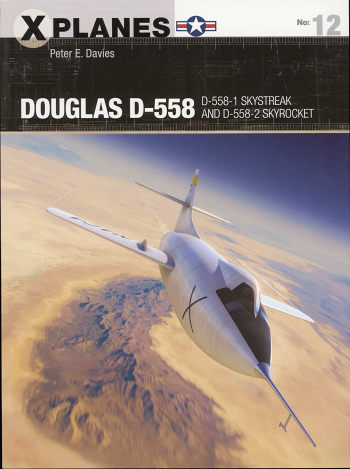 It wasn't until after WWII that the world started building a considerable number of experimental aircraft. These were planes that were not designed to become military combat planes, but specifically built to explore the limitations of new power sources (such as the turbojet and rocket) as well as new aircraft designs. Much of this was based on German engineering and speculative work, with those things that showed promise being rather heavily explored.
It wasn't until after WWII that the world started building a considerable number of experimental aircraft. These were planes that were not designed to become military combat planes, but specifically built to explore the limitations of new power sources (such as the turbojet and rocket) as well as new aircraft designs. Much of this was based on German engineering and speculative work, with those things that showed promise being rather heavily explored.
One of those research projects was developed mostly by the US Navy and Douglas aircraft. The first was the turbojet powered D.558-1. It was built to explore the transonic envelope, that part of flight above mach .8 and into mach 1. This aircraft was successful in breaking several world speed records, but like all of these aircraft was tricky to fly and so required a high level of skill. This was especially true if there was an emergency. Getting out of this and the follow-on aircraft while in flight would have proven to be nearly impossible and the designed escape system would surely have injured or killed the pilot if used.
The D.558-1 was a straight winged aircraft that was designed as the smallest airframe possible to fit around the most powerful turbojet yet available. In these early days of jet aviation, powerful was frankly, not all that much thrust. But it was enough to allow the aircraft, known as the Skystreak, to become a valuable research tool in exporing the transonic realm.
What was needed was more power and a sleeker airframe. This is where the D.558-2 (Skyrocket) came into being. It was designed as a combined rocket/turbojet aircraft. The reason for this was to enable it to take off from the ground and then ignite the rocket motor at altitude to explore the realm above mach 1. This enabled the aircraft to not use another carrier plane to get it to altitude. However, this did not go as planned. The aircraft took a fairly long time to reach altitude and when there, the rocket was not able to provide the endurance needed for speeds much over mach 1.
In the end, a rocket only version was developed, carried aloft by a B-29 (P2B-1 in Navy terms). This provided it the rocket powered endurance that was needed to reach higher speeds and was the first to exceed mach 2. However, it was a very tricky airplane to fly and required an incredible amount of skill and attention to details. Despite this, both the Skystreak and Skyrocket had a long life in experimental work. None were lost in accidents (a remarkable feat in itself), and most survive today.
The author does an excellent job of telling the story of the men and the machines. There are a goodly number of period photos and some great art work to go along with the prose. It provides the full story of these two aircraft and makes for a superb read. I know you will like it.
September 2019
Copyright ModelingMadness.com. All rights reserved.
Thanks to Osprey Publishing for the review book. For more on the complete line of Osprey books,
visit www.ospreypublishing.com
.
If you would like your product reviewed fairly and fairly quickly, please contact
the editor or see other details in the
Note to
Contributors.
 It wasn't until after WWII that the world started building a considerable number of experimental aircraft. These were planes that were not designed to become military combat planes, but specifically built to explore the limitations of new power sources (such as the turbojet and rocket) as well as new aircraft designs. Much of this was based on German engineering and speculative work, with those things that showed promise being rather heavily explored.
It wasn't until after WWII that the world started building a considerable number of experimental aircraft. These were planes that were not designed to become military combat planes, but specifically built to explore the limitations of new power sources (such as the turbojet and rocket) as well as new aircraft designs. Much of this was based on German engineering and speculative work, with those things that showed promise being rather heavily explored.